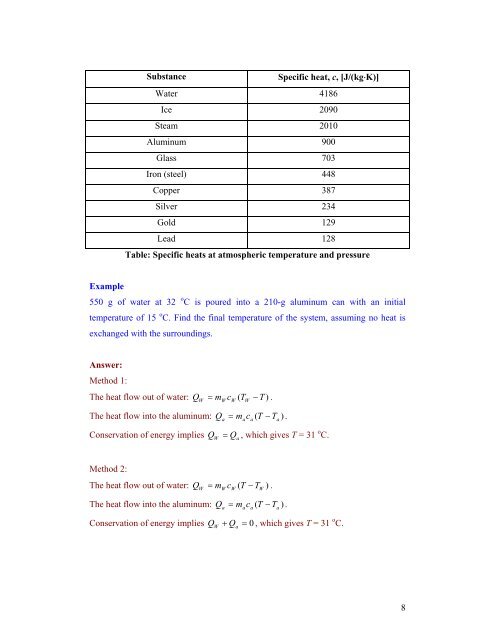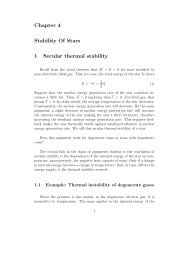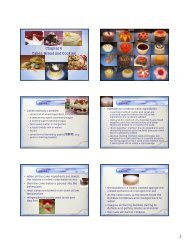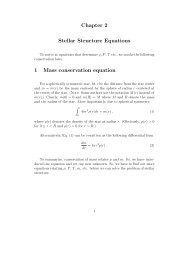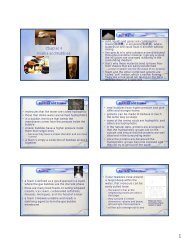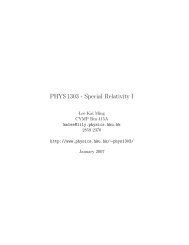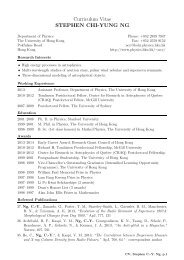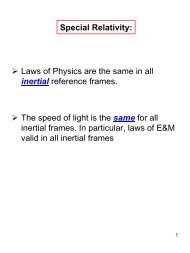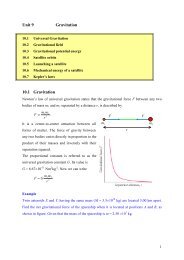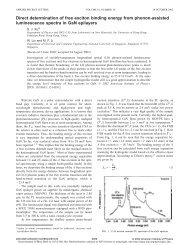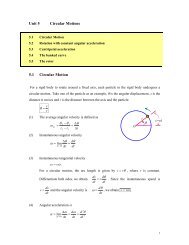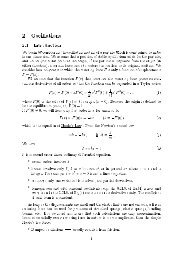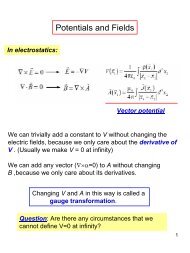Thermal Behavior of Matter and Heat Engines - Department of ...
Thermal Behavior of Matter and Heat Engines - Department of ...
Thermal Behavior of Matter and Heat Engines - Department of ...
Create successful ePaper yourself
Turn your PDF publications into a flip-book with our unique Google optimized e-Paper software.
Substance<br />
Specific heat, c, [J/(kg⋅K)]<br />
Water 4186<br />
Ice 2090<br />
Steam 2010<br />
Aluminum 900<br />
Glass 703<br />
Iron (steel) 448<br />
Copper 387<br />
Silver 234<br />
Gold 129<br />
Lead 128<br />
Table: Specific heats at atmospheric temperature <strong>and</strong> pressure<br />
Example<br />
550 g <strong>of</strong> water at 32 o C is poured into a 210-g aluminum can with an initial<br />
temperature <strong>of</strong> 15 o C. Find the final temperature <strong>of</strong> the system, assuming no heat is<br />
exchanged with the surroundings.<br />
Answer:<br />
Method 1:<br />
The heat flow out <strong>of</strong> water: Q = m c ( T − T ) .<br />
The heat flow into the aluminum: Q = m c T − T ) .<br />
W<br />
W<br />
a<br />
W<br />
W<br />
a a<br />
(<br />
a<br />
Conservation <strong>of</strong> energy implies<br />
Q = Q , which gives T = 31 o C.<br />
W<br />
a<br />
Method 2:<br />
The heat flow out <strong>of</strong> water: Q = m c T − T ) .<br />
W<br />
W<br />
W<br />
(<br />
W<br />
The heat flow into the aluminum: Q = m c T − T ) .<br />
a<br />
a a<br />
(<br />
a<br />
Conservation <strong>of</strong> energy implies Q Q = 0 , which gives T = 31 o C.<br />
W<br />
+ a<br />
8


